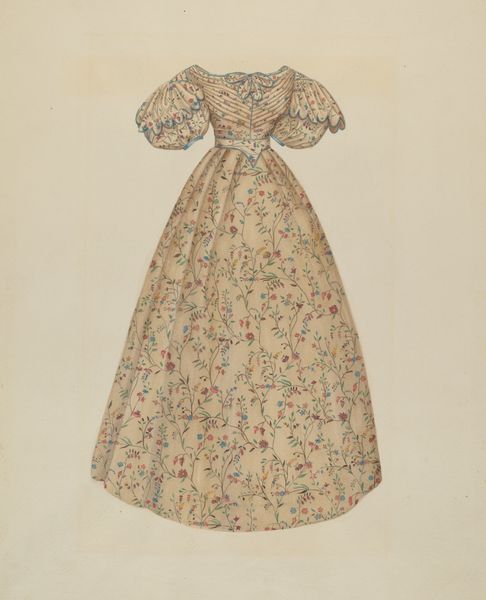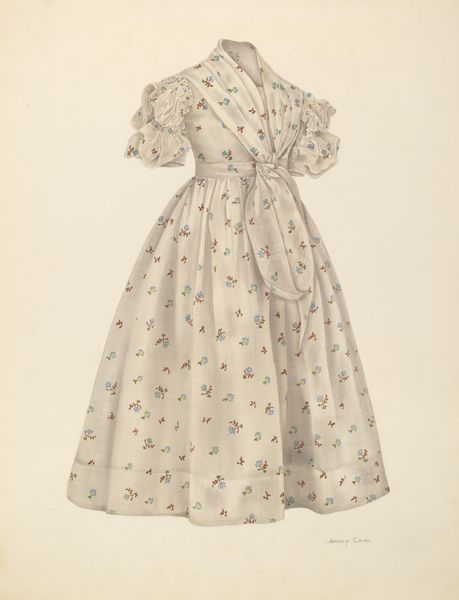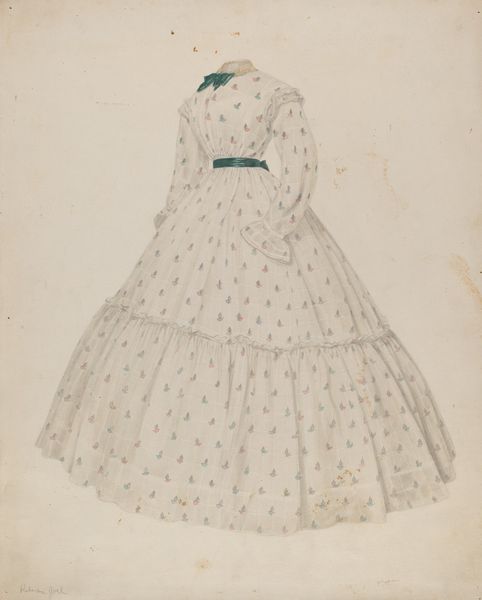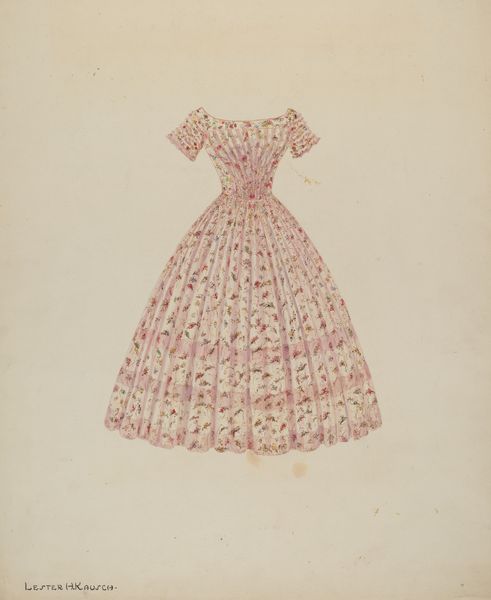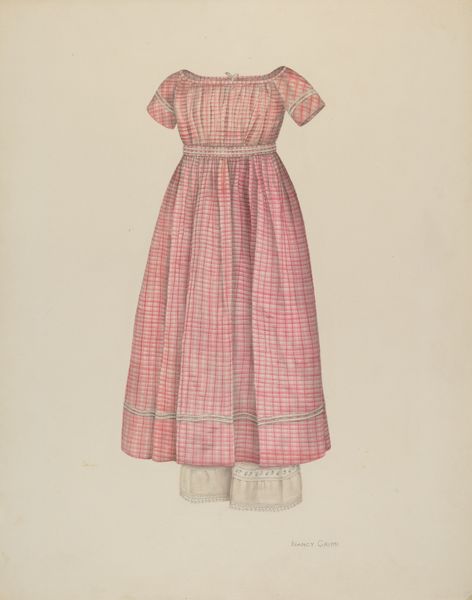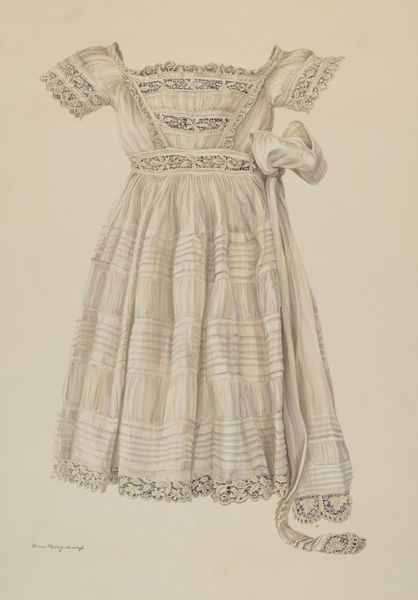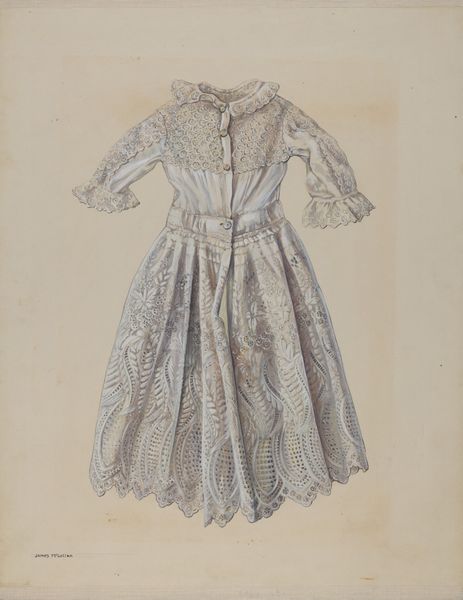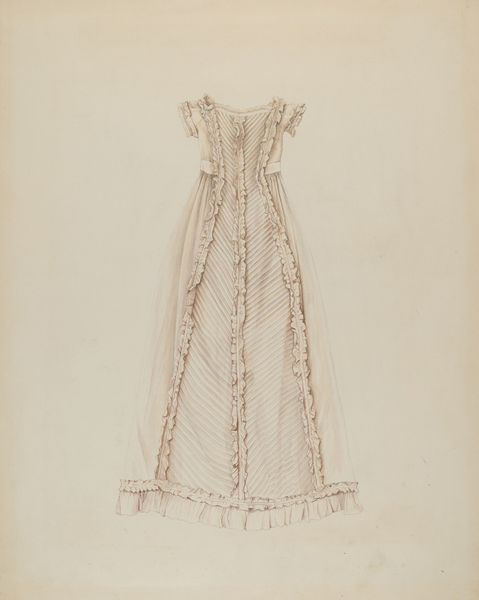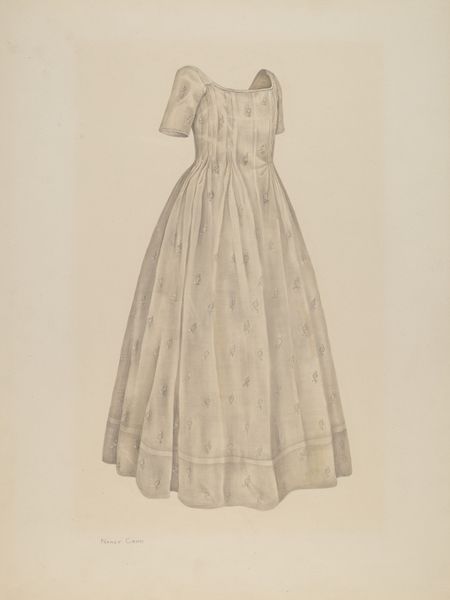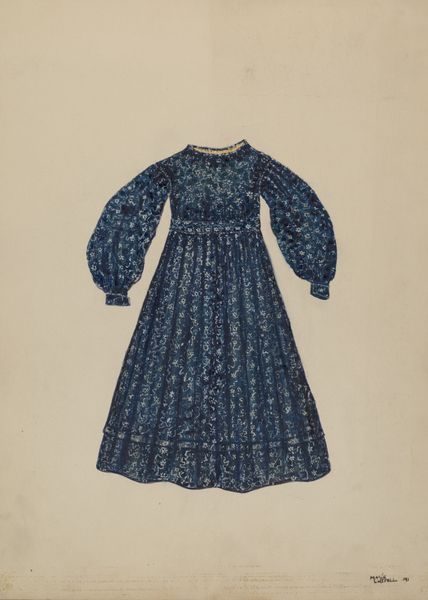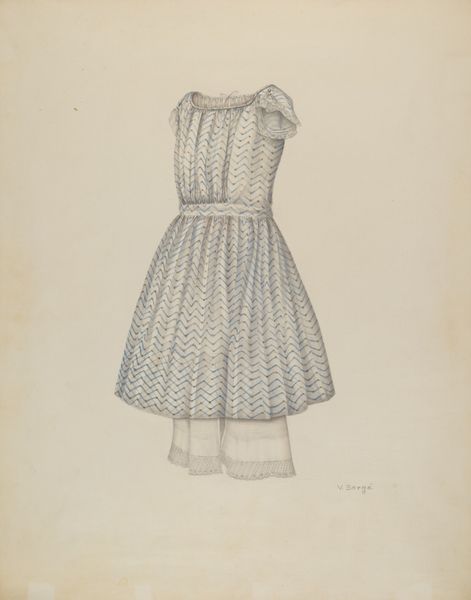
drawing, paper, pencil, graphite, pastel
#
drawing
#
figuration
#
paper
#
pencil drawing
#
pencil
#
graphite
#
pastel
#
realism
Dimensions: overall: 52.6 x 39.4 cm (20 11/16 x 15 1/2 in.)
Copyright: National Gallery of Art: CC0 1.0
Curator: Before us, we see “Dress,” a drawing likely rendered between 1935 and 1942 by Irene Lawson, created with pencil, graphite, and pastel on paper. What are your initial thoughts? Editor: My immediate reaction is one of almost melancholic fragility. The floral pattern and the slightly faded pastel tones evoke a sense of bygone domesticity, maybe even lost innocence. Curator: Yes, the floral motif certainly has historical weight. Flowers throughout art history often represent cycles of life, love, and remembrance, reflecting ephemerality. Consider how the dress itself acts as a vessel of memory. Editor: Exactly! This is where it gets interesting. It’s not just a dress; it's a potential symbol of identity and gender roles within a particular social stratum. I’m curious about Lawson's personal relationship to dressmaking and its implications for women in that era. Was it empowerment, or constraint? Curator: Potentially both! The craftsmanship suggested in the detail—note the shading, the almost photographic detail given to its ruffles and creases—could imply skillful labour, almost a form of artistry given social meaning through the practical purposes it fulfills. Editor: I agree. Visually, the dress almost floats, lacking a wearer and thus an identity of its own that becomes a sort of placeholder or blank canvas. Maybe Lawson's realism underscores its symbolic presence more than its literal, sartorial qualities. Who gets to wear this, in what context? Does the delicate print imply a certain lifestyle, or access? Curator: And the absence of a figure further emphasizes its status as an object and idea, leaving us, the viewers, to interpret. The puffs on the sleeves and the waistline design are clearly of a certain era. Editor: Which takes us to thinking more about social restrictions but also personal expression during those years. A very evocative drawing, I think, opening many avenues of social, gendered, and historical reflection. Curator: Absolutely. It really underscores the weight of objects and the stories they hold, allowing viewers today to reconsider the implications held within one material, sartorial piece.
Comments
No comments
Be the first to comment and join the conversation on the ultimate creative platform.
